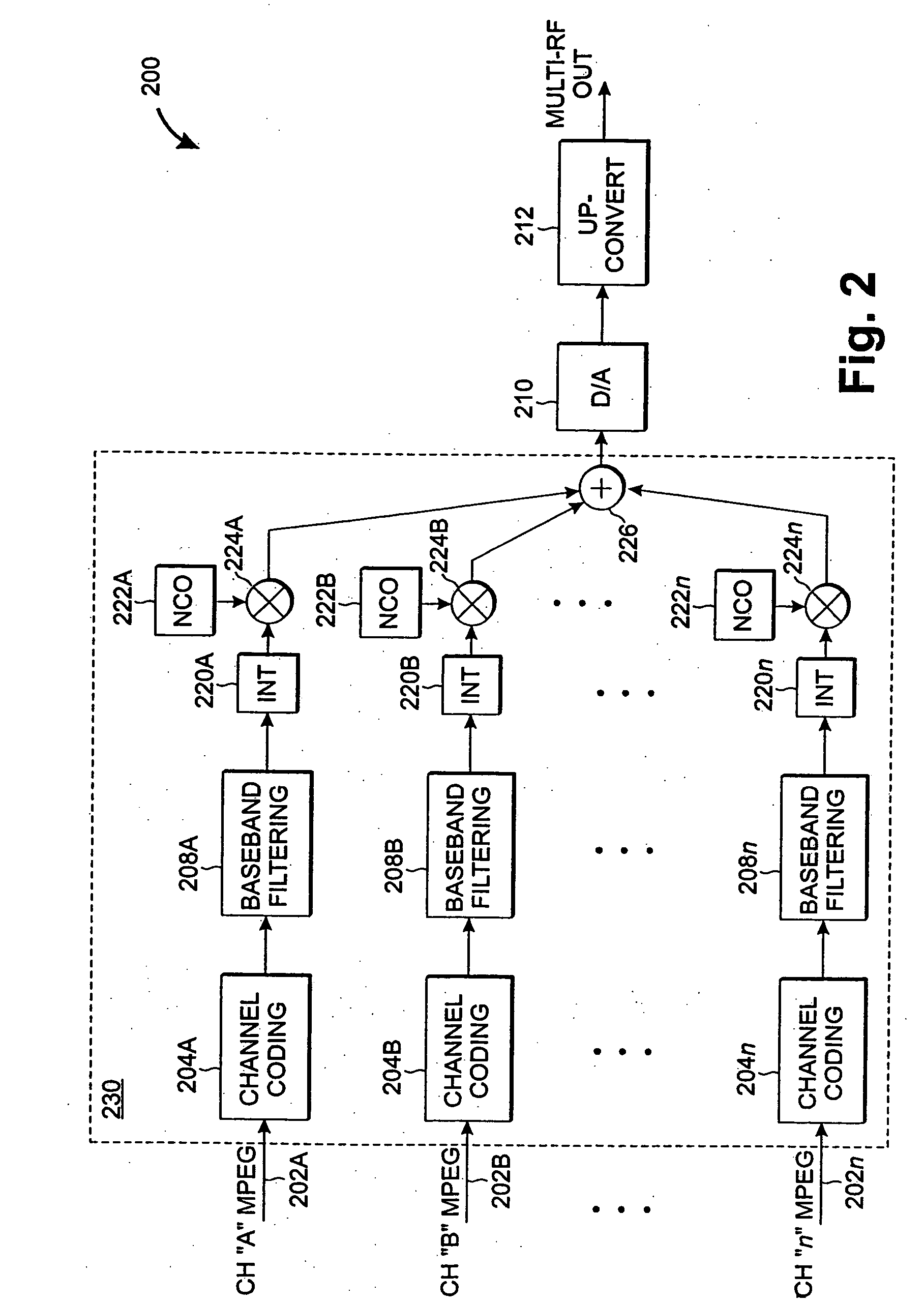Cost-effective multi-channel quadrature amplitude modulation
a quadrature amplitude and multi-channel technology, applied in the field of digital data transmission systems, can solve the problems of high-speed, high-performance processing, data routing, encoding and multiplexing hardware, etc., and achieve the effect of high efficiency and cost-effectiveness
- Summary
- Abstract
- Description
- Claims
- Application Information
AI Technical Summary
Problems solved by technology
Method used
Image
Examples
Embodiment Construction
[0029] The present inventive technique provides an efficient, cost-effective means of multiplexing multiple “channels” of digital television and other data onto a single transmission medium.
[0030] Most prior-art multi-channel QAM modulators are generally organized as shown in FIG. 1, which shows a system 100 of separate channel modulators being combined (summed) via an RF combiner 114 to produce a multi-channel RF output signal (Multi-RF Out). In FIG. 1, MPEG data streams 102A, 102B, . . . , 102n corresponding to “n” separate program sources are each encoded by a respective channel coder 104A, 104B, . . . , 104n to produce a respective QAM “symbol” stream 106A, 106B, . . . , 106n representing the MPEG data streams 102A, 102B, . . . , 102n. Each QAM symbol stream is encoded according to a suitable standard for digital cable television QAM stream encoding (e.g., ITU-T J.83 Annex A or Annex B, provided by the International Telecommunications Union, Geneva, Switzerland) whereby each QA...
PUM
 Login to View More
Login to View More Abstract
Description
Claims
Application Information
 Login to View More
Login to View More - R&D
- Intellectual Property
- Life Sciences
- Materials
- Tech Scout
- Unparalleled Data Quality
- Higher Quality Content
- 60% Fewer Hallucinations
Browse by: Latest US Patents, China's latest patents, Technical Efficacy Thesaurus, Application Domain, Technology Topic, Popular Technical Reports.
© 2025 PatSnap. All rights reserved.Legal|Privacy policy|Modern Slavery Act Transparency Statement|Sitemap|About US| Contact US: help@patsnap.com



